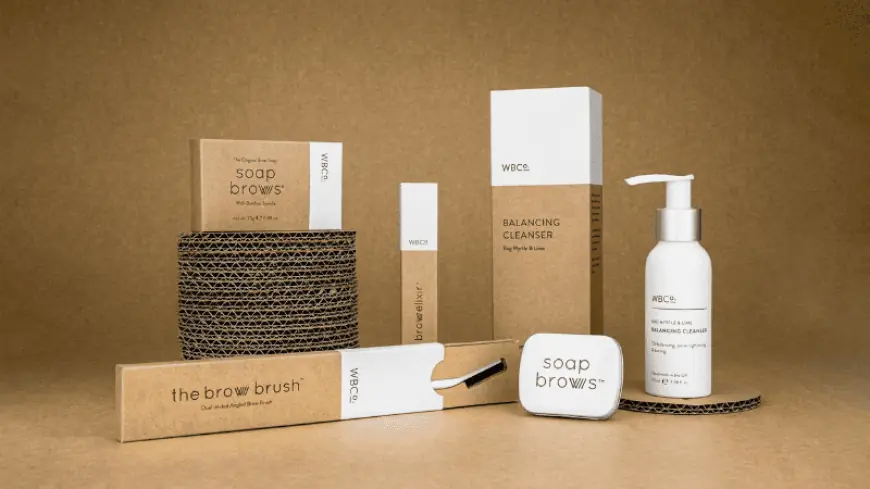Sustainable Beauty Packaging How to Do It Right
Discover how to create effective sustainable beauty packaging. Learn eco-friendly materials, smart design tips, and branding strategies that appeal to conscious consumers.

In today’s eco-conscious world, sustainability is no longer optional—it’s expected. Beauty brands, both new and established, are shifting towards sustainable packaging to reduce environmental impact and align with customer values. But what does sustainable beauty packaging really mean, and how can you do it right?
From biodegradable materials to refillable containers, this blog post explores how to implement sustainability in beauty packaging—without compromising aesthetics, safety, or brand identity.
What Is Sustainable Beauty Packaging?
Sustainable beauty packaging refers to eco-friendly materials and designs used to contain, protect, and promote beauty and cosmetic products. It aims to minimize waste, reduce carbon footprints, and encourage responsible consumption.
Key principles include:
-
Using biodegradable or recyclable materials
-
Reducing packaging layers
-
Incorporating refillable or reusable components
-
Avoiding harmful inks and plastic coatings
-
Supporting ethical and local sourcing
Why It Matters for Beauty Brands
Today's beauty consumers are increasingly eco-conscious, and they demand more transparency from the brands they support. According to global studies:
-
Over 70% of beauty buyers prefer sustainable packaging
-
Eco-packaging influences purchasing decisions, especially among Gen Z and Millennials
-
Brands that show environmental responsibility often experience higher customer loyalty
By integrating sustainable packaging, beauty brands not only help the planet but also boost their image and attract a wider audience.
How to Do Sustainable Beauty Packaging Right
1. Choose Eco-Friendly Materials
Selecting the right packaging material is the foundation of sustainability. Here are the top choices:
-
Kraft paper or cardboard: Great for boxes, labels, and outer packaging. It’s recyclable, biodegradable, and has a natural aesthetic.
-
Glass: Ideal for skincare serums, oils, and perfumes. It’s 100% recyclable and reusable.
-
Bamboo: A renewable and compostable option perfect for caps, jars, and applicators.
-
Aluminum tins: Lightweight, recyclable, and durable—ideal for lip balms, solid perfumes, or creams.
-
Bioplastics (PLA): Made from corn starch or sugarcane, they are compostable under certain conditions.
-
Post-consumer recycled (PCR) plastic: Better than virgin plastic and helps reduce landfill waste.
Pro Tip: Avoid multi-layered materials that are hard to separate and recycle.
2. Minimize Excess Packaging
Minimalism is key. Instead of bulky boxes, use sleek, smart designs that serve their function without waste.
-
Skip unnecessary inserts and wrappers
-
Reduce inner linings or plastic trays
-
Opt for multi-purpose containers when possible (e.g., refillable compacts or dual-use bottles)
This not only reduces material costs but also shows your brand’s commitment to efficiency and the environment.
3. Make It Refillable or Reusable
Design packaging that can be refilled or reused, especially for skincare and makeup items.
Examples:
-
Refillable glass jars or bottles with recyclable refill pouches
-
Magnetic palettes where consumers can switch out eyeshadows or blushes
-
Twist-up tubes for lip balms or deodorants with replaceable cores
Reusable packaging reduces long-term waste and builds brand loyalty, as consumers return for refills rather than throwing away the container.
4. Use Sustainable Inks and Labels
Printing often goes overlooked, but toxic inks and adhesives can render otherwise recyclable packaging non-recyclable.
Instead, choose:
-
Soy-based or water-based inks
-
Compostable labels made from sugarcane or hemp
-
Minimal branding on outer packaging to reduce printing needs
Eco-labels that communicate sustainability (like FSC-certified, biodegradable, or “Made from Recycled Materials”) also build trust with customers.
5. Highlight Your Packaging’s Sustainability
Even the best sustainable design needs visibility. Use your website, packaging, and marketing materials to explain:
-
What your packaging is made of
-
How to dispose of or recycle it properly
-
Why it’s better for the environment
Educating consumers leads to more responsible disposal habits—and makes them feel good about supporting your brand.
6. Partner with the Right Packaging Supplier
Work with a packaging supplier who specializes in eco-friendly beauty packaging, understands material compliance, and can guide you on innovative, sustainable solutions.
If you’re looking for custom sustainable cosmetic packaging, Packaging Forest LLC offers eco-conscious kraft boxes, cardboard sleeves, and biodegradable labels tailored for beauty brands.
Examples of Sustainable Beauty Packaging Done Right
-
Lush uses minimal packaging and even sells “naked” products like solid shampoo bars.
-
Fenty Beauty offers refillable compacts to reduce single-use waste.
-
Tata Harper uses glass bottles with recyclable pump components and soy-based inks.
-
Axiology creates zero-waste balmies in recyclable paper tubes—no plastic at all.
Conclusion: Sustainability Meets Style
Sustainable beauty packaging doesn’t have to be dull or overly expensive. By choosing eco-friendly materials, simplifying your designs, and emphasizing reusability, you can create packaging that’s beautiful, functional, and environmentally responsible.
As consumers become more mindful of what they buy—and what it comes in—beauty brands that lead with sustainability will shape the future of the industry.
What's Your Reaction?
 Like
0
Like
0
 Dislike
0
Dislike
0
 Love
0
Love
0
 Funny
0
Funny
0
 Angry
0
Angry
0
 Sad
0
Sad
0
 Wow
0
Wow
0


















































